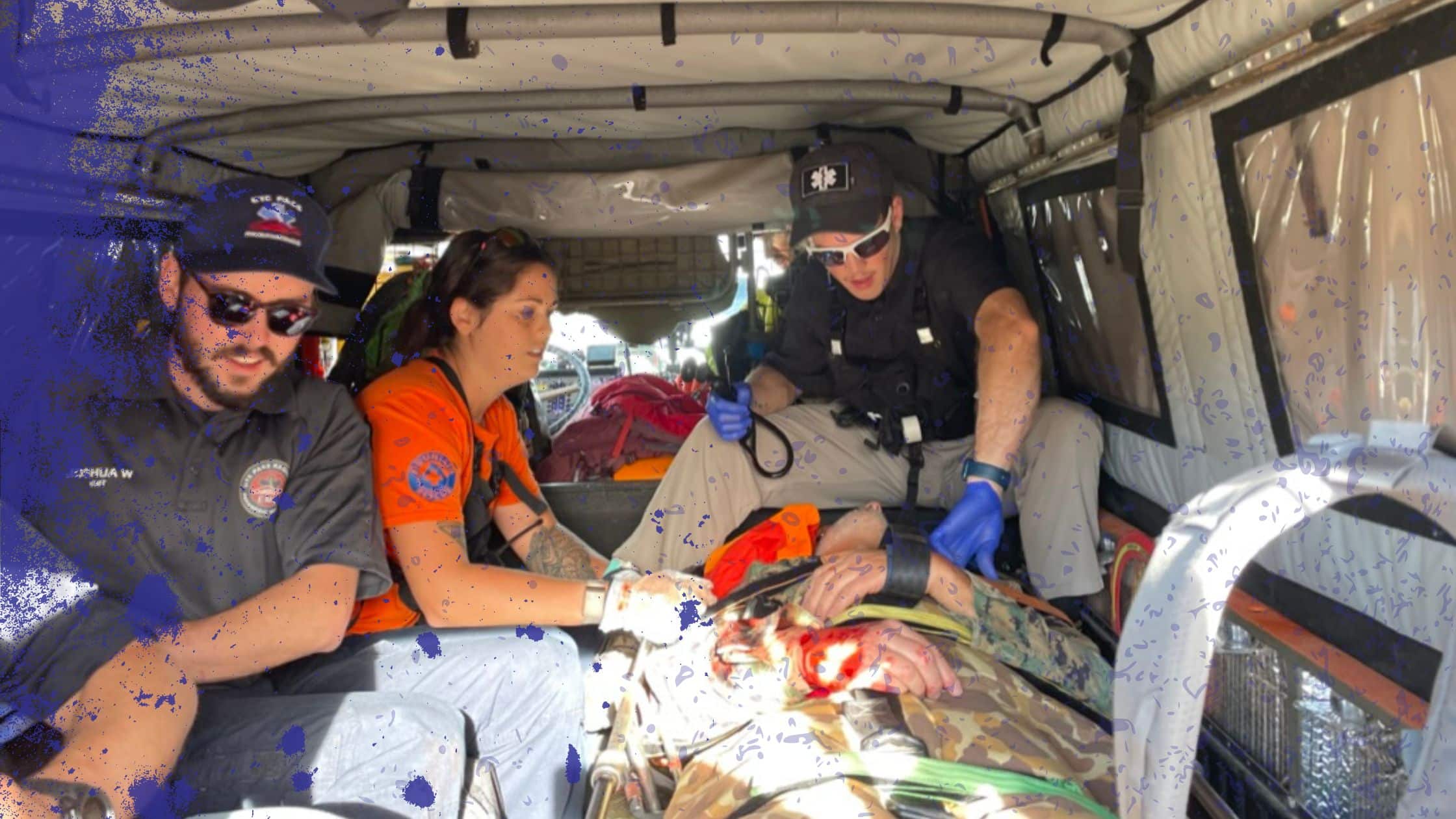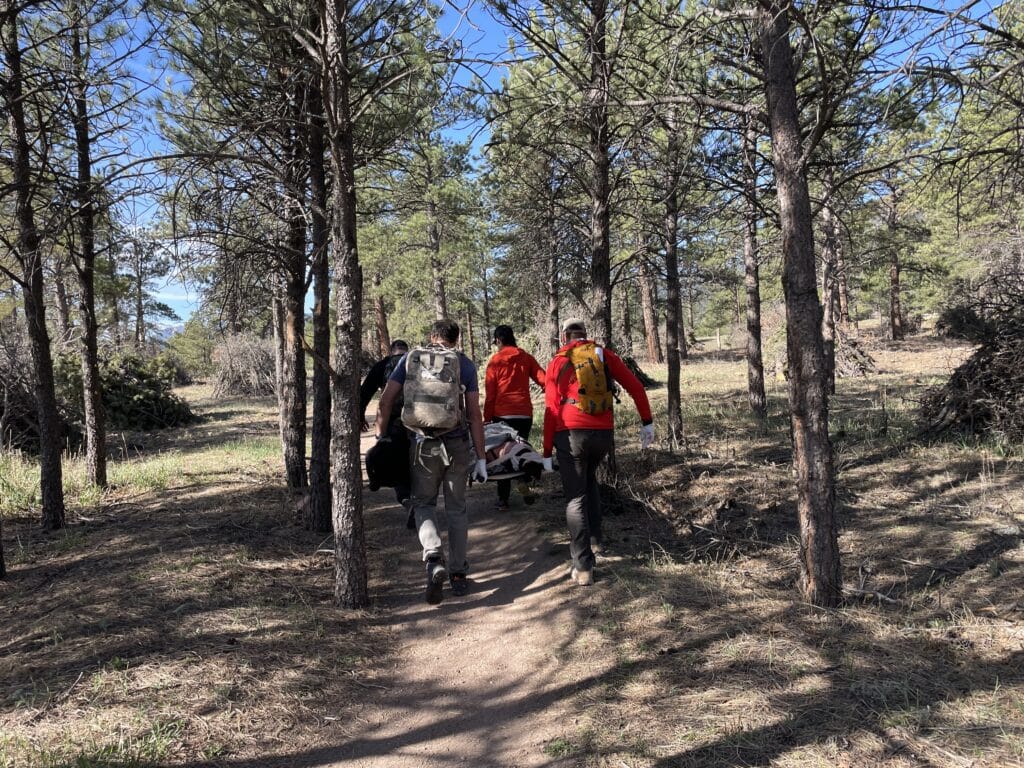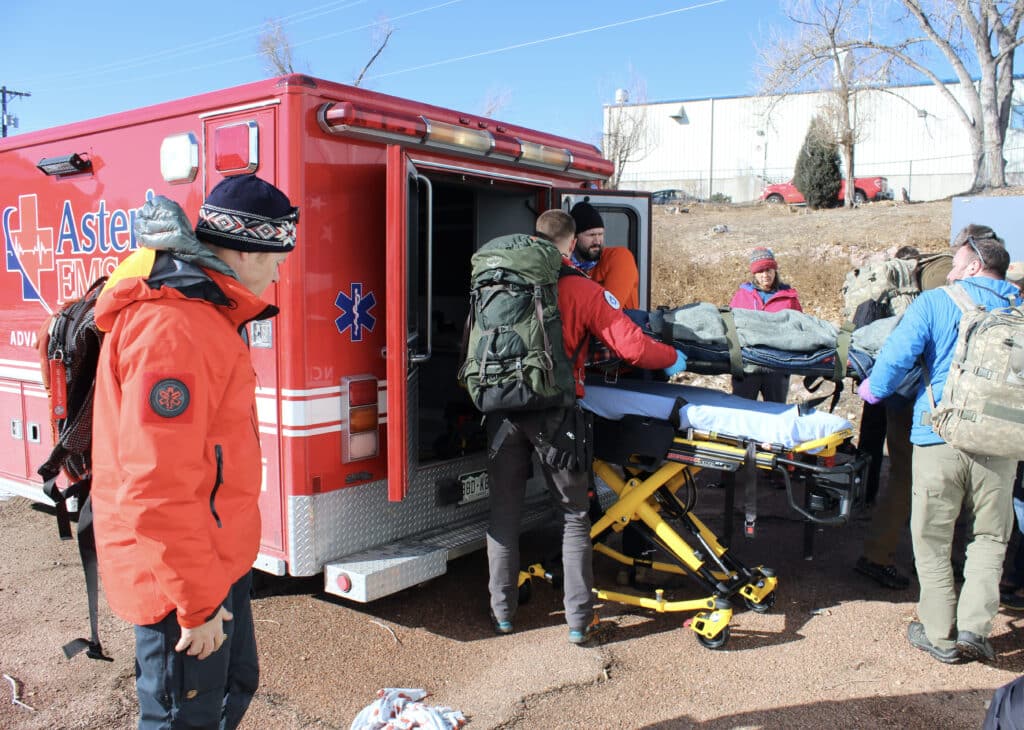
Why AEC Training Matters
The greatest need for quality, life-saving heath care training for emergency medical responders is in the rural areas of the country. In Colorado’s El Paso County, where SMS is headquartered, one-third of the population live in rural communities with no direct access to hospital. In ideal conditions, drive times for those residents (and ambulance services) can be up to 40 minutes to reach the nearest hospital center in Colorado Springs. (source: El Paso County Needs Assessment)

Did you know that across the United States, about 57 million people, or 18% of the total population, call rural communities home? [Source: 2018 policy brief from the National Rural Health Association (EMS Services in Rural America: Challenges and Opportunities)]
Why does the number of rural residents in the country matter in healthcare?
According to a National Rural Health Association Policy, “Rural Americans, on average, tend to be older, sicker, and poorer. …One of the largest contributing factors to the disparity in mortality rate from traumas, such as overdose, for rural residents is travel time and distance to trauma centers. In fact, research finds rural residents are significantly more likely than non-rural residents to die following traumatic injury.
Many EMS providers set a goal of having a response time of 8 minutes or less for advanced life support units when dealing with life-threatening events. However, this may become an unattainable goal for many rural EMS providers as travel time and distance to the patient location alone can far exceed an 8-minute threshold.
Despite this clear need for increased healthcare access in rural areas, only 9% of EMS practitioners in the U.S. work in rural America. Additionally, rural hospitals are facing closure crisis, with about 41 percent of Critical Access Hospitals facing negative operating margins, which further decreases possible points of care for people with a pronounced need.” (Source)
The typical stabilization and patient transport to a hospital center occurs within 20-30 minutes in urban environments. Yet rural/remote EMS providers work primarily in situations with the time/ability to access a critical care hospital is generally calculated in HOURS, in ideal conditions.
Access to critical care in underserved areas begins with a competent first responder and rescuer community safety net. The EMS system is the first crucial link to the healthcare systems at large and, in fact, EMS is many times the only initial treatment followed by prolonged transport times to a trauma center. By investing in the education and training of our front-line providers, every citizen will benefit from increased competence of the force. The Austere Emergency Care curriculum is specifically designed to advance the trauma and injury care capabilities of these frontline responders.
“I have been an EMT for almost 10 years. This course challenged every aspect I thought I knew. Every provider, new, old, or in between needs to take this class. I walked away feeling more prepared, educated, and actually confident.”

AEC Course Participant
El Paso County, Colorado
It is very common for EMS units in rural parts of the U.S. to have sparsely populated coverage areas that stretch over large distances and challenging terrain. Time and distance traveled for EMS personnel to respond to a call will typically be much greater in rural areas than urbanized areas. This is especially true for EMS providers that are located in counties where an existing hospital is not available.
The large coverage areas, travel distances, and increased demand for time spent with the patient can lead to significant impacts on patient outcomes and survival rates. For example, the fatality rate from a vehicular accident in a rural area is almost twice as high when compared to an urban area. Faster EMS response times create better patient outcomes.
These statistics show the inherent disadvantage of rural populations in access to quality care. As such, their lifeline to quality care falls upon the first responders and EMS professionals. These challenges need to be met by best preparing those professionals with the latest evidence-based standards of care currently being developed throughout our military and civilian institutions.
The remote nature of the communities where our EMS professionals live and work demands the highest quality curriculum to sustain their life-saving trauma skills. Our curriculum delivers this to them. Learn more about the Austere Emergency Care course here.

The large coverage areas, travel distances, and increased demand for time spent with the patient can lead to significant impacts on patient outcomes and survival rates.
The fatality rate from a vehicular accident in a rural area is almost twice as high when compared to an urban area.
What is the background on the Austere Emergency Care (AEC) curriculum and how does it fill the needs of EMS professionals and rural residents?
Our lessons were obtained by decades of direct medical support to military forces not only in Iraq and Afghanistan, but in Africa, Southeast Asia and some of the most remote and harshest environments on earth. We broke down silos of medical expertise, incorporating multidisciplinary experts and practices, to create a comprehensive set of medical standards know as Prolonged Field Care.
The AEC curriculum was derived directly from the popular Dark Woods curriculum currently being taught to US military Special Operations Forces by a private training company, Ragged Edge Solutions. This course is considered the premier Prolonged Field Care educational experience in the world.
Dr. Keenan wrote the educational content for the Dark Woods course, and due to the success and observed greater civilian EMS educational need, founded the nonprofit educational company SMS. He and his colleagues have designed the AEC curricula specific to EMS professionals. The AEC course utilizes live action realistic role players to recreate and immerse students in a hyper-realistic training environment, proctored by seasoned professionals, unmatched anywhere in the world. Students learn how to utilize the tools, medicine, and resources on hand to deliver the medical attention needed to save a life when immediate hospital access is not available. With increased hospital transport times in rural environments, these situations can come into play more often than one would expect.
By incorporating best practices of prehospital care in the military and remote environments, with evidence based hospital care principles, we have developed a unique curriculum that will enable, enhance and improve prehospital care practice!
Our courses
Read more about our specific courses and how they differ from other Prolonged Field Care trainings.